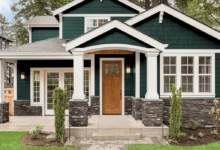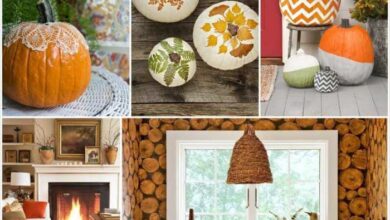Home Exterior Apps Design, Plan, & Build
Home Exterior Apps are revolutionizing how we plan and visualize our dream homes. Forget endless sketches and confusing blueprints; these apps offer intuitive design tools, 3D modeling capabilities, and even AR visualization, putting the power of exterior home design directly into your hands. Whether you’re a seasoned DIYer or just starting to think about renovations, these apps simplify the process, from initial concept to final execution, helping you bring your vision to life.
This exploration delves into the diverse world of home exterior apps, examining their features, functionality, and the market trends shaping their evolution. We’ll explore the best apps for design, project management, and connecting with professionals, comparing their user interfaces and highlighting key technological advancements like AI and image recognition. We’ll also showcase real-world examples to illustrate how these apps can streamline your next home improvement project.
Types of Home Exterior Apps
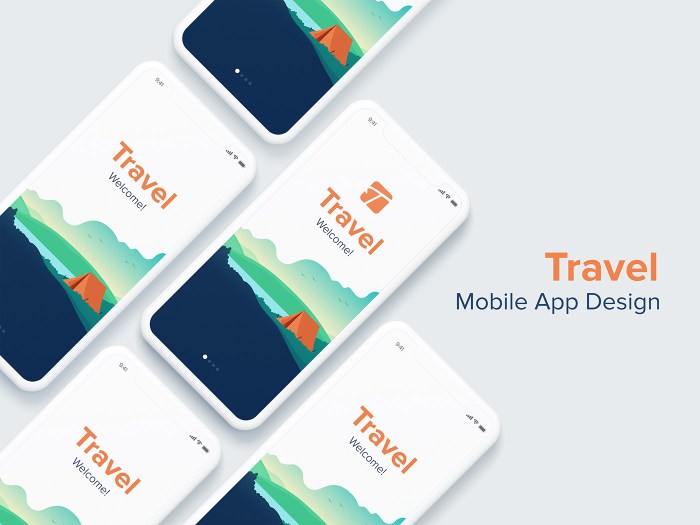
Source: behance.net
Choosing the right app for your home exterior project can significantly impact your efficiency and the final outcome. The market offers a diverse range of applications, each catering to specific needs and preferences. Understanding the different categories and their features is crucial for making an informed decision. This section categorizes home exterior apps and explores the unique strengths of several prominent examples.
Categorization of Home Exterior Apps
The variety of home exterior apps can be broadly classified into three main categories: design apps, project management apps, and professional connection apps. Each category offers unique functionalities to assist homeowners and professionals throughout the exterior renovation process.
| Category | App Name | Key Features | Platform Compatibility |
|---|---|---|---|
| Design | Planner 5D | 3D modeling, extensive material library, furniture placement, landscape design tools, photorealistic renderings. | iOS, Android, Web |
| Design | Roomstyler 3D Home Planner | Easy-to-use interface, AR features for visualizing designs in real-time, diverse design styles, furniture catalog integration. | iOS, Android, Web |
| Design | HomeByMe | Intuitive drag-and-drop interface, large selection of 3D objects, collaboration features, ability to generate floor plans. | Web, iOS, Android |
| Project Management | Cozi | Task management, calendar integration, shared to-do lists, expense tracking, communication tools. | iOS, Android, Web |
| Project Management | Asana | Project timelines, task assignments, progress tracking, file sharing, communication features, suitable for large-scale projects. | iOS, Android, Web |
| Project Management | Trello | Kanban board system, visual task organization, progress visualization, collaboration features, suitable for smaller projects. | iOS, Android, Web |
| Professional Connections | Houzz | Extensive database of professionals, project portfolios, reviews and ratings, communication tools, direct contact with professionals. | iOS, Android, Web |
| Professional Connections | Thumbtack | Service discovery platform, professional profiles, request for quotes, project bidding, user reviews. | iOS, Android, Web |
| Professional Connections | Angi (formerly Angie’s List) | Professional profiles, service ratings, reviews, booking system, project management features. | iOS, Android, Web |
Unique Selling Propositions of Prominent Apps
Planner 5D’s strength lies in its detailed 3D modeling capabilities and extensive material library, allowing for highly realistic visualizations. Roomstyler 3D Home Planner excels in its user-friendly interface and augmented reality features, enabling users to visualize designs directly within their homes. HomeByMe stands out with its intuitive drag-and-drop functionality and collaborative features, making design collaboration easy. Cozi excels in its simplicity and ease of use for managing smaller home projects, while Asana provides robust tools for managing larger, more complex projects with multiple collaborators.
Finally, Houzz offers an unparalleled network of home professionals and a vast portfolio of completed projects to inspire and guide users.
User Interface Comparison of Leading Home Exterior Apps
Five leading home exterior apps—Planner 5D, Roomstyler 3D Home Planner, HomeByMe, Houzz, and Angi—offer diverse user interfaces. Planner 5D’s interface, while powerful, can feel somewhat overwhelming to beginners due to its numerous features. Roomstyler 3D Home Planner boasts a simpler, more intuitive interface, making it accessible to a wider range of users. HomeByMe’s drag-and-drop functionality makes navigation straightforward. Houzz’s interface is visually appealing and easy to navigate for finding professionals, but its project management features are less comprehensive.
Angi provides a clean and efficient interface focused on connecting users with professionals. Each app’s strengths and weaknesses ultimately depend on the user’s technical proficiency and project requirements.
Features and Functionality
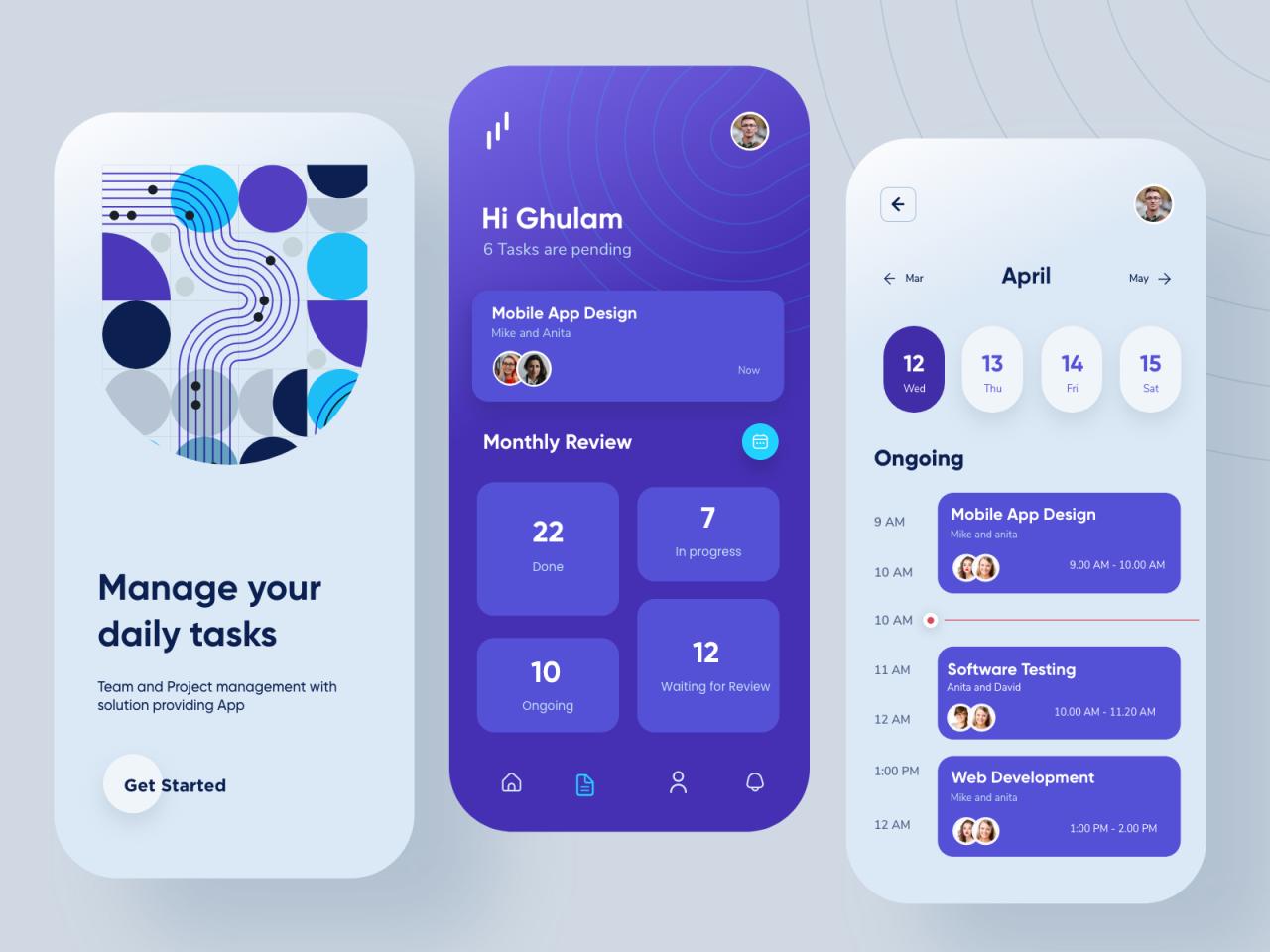
Source: dribbble.com
Home exterior design apps offer a range of features designed to simplify and enhance the home improvement process. These features leverage technology to provide users with intuitive tools for visualizing, planning, and executing their exterior renovation projects. From initial design concepts to final cost estimations, these apps streamline the entire journey.
The core functionality revolves around creating a realistic representation of the user’s home and allowing for experimentation with different design elements. This involves sophisticated 3D modeling, augmented reality (AR) visualization, and robust material selection tools. Furthermore, many apps incorporate cost estimation tools and features to facilitate communication with contractors.
Common Features of Home Exterior Apps
The following table summarizes common features found in popular home exterior design applications, highlighting their descriptions, examples, and user benefits.
| Feature | Description | App Examples | User Benefits |
|---|---|---|---|
| 3D Modeling | Creates a three-dimensional model of the user’s home, allowing for detailed visualization of changes. | HomeByMe, Planner 5D, Roomstyler | Provides a realistic preview of design choices before implementation. |
| AR Visualization | Uses augmented reality to overlay design options onto a live view of the user’s home. | Houzz, IKEA Place, Planner 5D | Allows users to “see” how design changes will look in real-world context. |
| Material Selection Tools | Offers a wide selection of materials (e.g., siding, roofing, paint) with visual representations. | HomeByMe, ProReal3D, Sweet Home 3D | Simplifies the process of choosing materials and visualizing their impact on the overall design. |
| Cost Estimation Tools | Provides estimated costs for materials and labor based on user’s design choices. | Houzz, Lowe’s Visualizer | Helps users budget effectively and manage project expenses. |
| Contractor Communication Features | Facilitates communication with contractors, often including project sharing and collaboration tools. | Many apps offer this feature, often through integration with other platforms. | Streamlines the process of hiring and working with contractors. |
Technological Advancements Driving Feature Evolution
Several technological advancements are continually improving the features and capabilities of home exterior design apps. These advancements lead to more realistic visualizations, improved user experience, and greater accuracy in cost estimations.
Artificial intelligence (AI) and machine learning (ML) are playing a crucial role. AI algorithms power features like automatic material identification and design suggestions based on user preferences and style trends. Improved rendering techniques, including ray tracing and path tracing, create photorealistic visualizations that better represent the final look of the exterior design. These improvements offer a far more accurate representation than previous generations of home design software.
Image Recognition in Home Exterior Apps
Many apps utilize image recognition technology to enhance user experience and design assistance. For example, a user could upload a photo of their home, and the app would automatically identify the existing features (e.g., roof type, siding material, window styles). This information is then used to create a 3D model as a starting point for design modifications. Furthermore, image recognition can assist with material selection.
By uploading a photo of a desired material (e.g., a brick sample), the app can identify the material and suggest similar options from its database, simplifying the selection process and providing accurate information on pricing and availability.
User Experience and Design
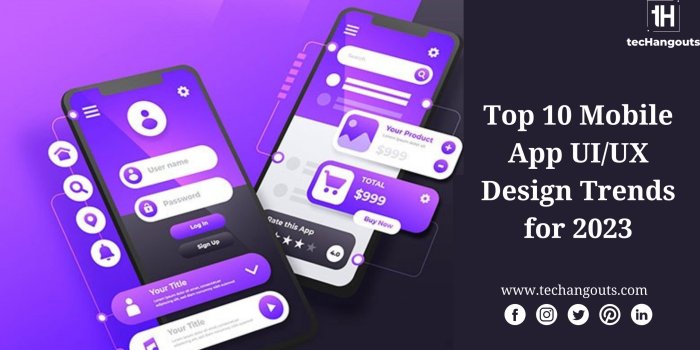
Source: techangouts.com
A successful home exterior app hinges on a user-friendly interface and intuitive design. The app should seamlessly guide users through the process of visualizing and planning their home’s exterior, minimizing frustration and maximizing engagement. A poorly designed app can lead to user abandonment and negative reviews, undermining the app’s potential.The overall user experience should be enjoyable and efficient, allowing users to easily explore options, make changes, and share their designs.
This requires careful consideration of visual appeal, navigation, and functionality, all working together to create a positive and productive experience.
Intuitive Design and User-Friendly Interfaces, Home Exterior Apps
Intuitive design is paramount for home exterior apps. Users, regardless of their technical expertise, should be able to navigate the app effortlessly. Clear visual cues, simple navigation menus, and easily understandable instructions are essential. For example, the app should use large, easily tappable buttons, and clear visual indicators to show the user’s progress. A consistent design language throughout the app helps users quickly learn how to use its various features.
The use of familiar icons and design patterns will also significantly improve the user experience.
Common Usability Challenges and Improvements
Many home exterior apps struggle with complex workflows, overwhelming users with too many options at once. Another common issue is poor image quality or slow rendering times, leading to a frustrating experience. Some apps lack robust undo/redo functionality, making it difficult to correct mistakes. Finally, inadequate support for various device types and screen sizes can also significantly detract from the user experience.To address these challenges, apps should streamline their workflows, breaking down complex tasks into smaller, manageable steps.
High-resolution images and optimized rendering are crucial for a smooth user experience. Robust undo/redo features are a must-have, providing users with the freedom to experiment without fear of irreversible mistakes. Responsive design is essential to ensure the app works seamlessly across all devices.
Improved User Interface Mockup
Imagine a home exterior app with a clean, minimalist design. The main screen displays a 3D model of the user’s house, easily manipulated via intuitive drag-and-drop controls. A side panel offers a categorized selection of design elements – siding, roofing, windows, doors, landscaping – each with high-quality images and detailed descriptions. Each element is clearly labeled, and hovering over an item displays a preview on the 3D model.
The color palette is consistent and calming, using muted tones to avoid overwhelming the user. A large, easily accessible “Undo” button is always visible. The top navigation bar provides quick access to settings, help, and a gallery of user-created designs for inspiration. The bottom navigation bar offers quick access to the main sections: “3D Model,” “Materials,” “Landscaping,” and “Share.” The overall aesthetic is modern and clean, prioritizing clarity and ease of use.
The app uses a consistent font throughout and employs sufficient white space to avoid a cluttered appearance. Progress is indicated through subtle animations and visual cues, providing feedback without being distracting. This design prioritizes ease of use and intuitive navigation, making the process of designing a home exterior enjoyable and efficient.
Market Analysis and Trends: Home Exterior Apps
The home exterior app market is dynamic, constantly evolving with technological advancements and shifting user preferences. Understanding these trends is crucial for developers to create successful and competitive applications. This section analyzes the current market landscape, identifies leading apps, and explores future possibilities.
Top Five Popular Home Exterior Apps
Determining definitive rankings based solely on downloads or user reviews across all app stores globally is challenging due to data limitations and variations in reporting. However, we can identify apps consistently praised for their features and user base, offering insights into what makes a home exterior app successful. These apps typically combine ease of use, visually appealing designs, and helpful features to address specific needs within the home improvement sector.
Consider these factors as indicators of popularity, not absolute rankings.
- Houzz: Houzz’s popularity stems from its extensive database of home design ideas, professional profiles, and its ability to connect homeowners with contractors. Its integrated features for planning and visualization contribute significantly to its user base.
- Planner 5D: This app excels in its 3D modeling capabilities, allowing users to create detailed virtual representations of their homes. Its intuitive interface and comprehensive tools make it a favorite among DIY enthusiasts and professionals alike.
- HomeByMe: Similar to Planner 5D, HomeByMe offers 3D modeling, but it often stands out for its ease of use, particularly for those less experienced with design software. Its focus on simplicity makes it accessible to a broader audience.
- Roomstyler 3D Home Planner: Roomstyler distinguishes itself with its vast library of furniture and decor items from real brands. This allows for realistic visualizations and helps users make informed decisions about their exterior projects.
- ColorSnap Visualizer (Sherwin-Williams): This app focuses on paint color selection. Its popularity is rooted in its ability to let users virtually “paint” their home’s exterior with various Sherwin-Williams colors, offering a practical tool for a specific design element.
Current Market Trends
The home exterior app market is experiencing significant growth driven by several key trends. The increasing adoption of smartphones and tablets, coupled with a rising interest in home improvement projects, fuels this growth. Furthermore, the integration of emerging technologies is shaping user experience and expectations.
- Augmented Reality (AR): AR technology is rapidly transforming how users visualize and interact with home exterior design. Apps are incorporating AR features that allow users to overlay virtual models of landscaping, siding, or other elements onto real-world images of their homes, offering a more realistic preview before committing to changes.
- Artificial Intelligence (AI): AI-powered features are becoming increasingly common. These include AI-driven design suggestions, automated material recommendations based on user preferences and local climate, and even intelligent cost estimation tools.
- Focus on Sustainability: Consumers are increasingly conscious of environmental impact. Apps are responding by incorporating features that promote sustainable design choices, such as suggesting eco-friendly materials or providing energy efficiency calculations.
- Personalized Experiences: Users expect personalized recommendations and tailored design suggestions. Apps are leveraging user data to provide more relevant and targeted content, enhancing user engagement and satisfaction.
Future Developments and Innovations
Looking ahead, several innovations are likely to further shape the home exterior app market. The convergence of technologies, coupled with evolving user demands, will drive further advancements.
- Advanced 3D Modeling and Rendering: Expect to see even more realistic and detailed 3D models, incorporating elements like accurate lighting, shadows, and textures. This will provide a nearly photorealistic preview of design choices.
- Integration with Smart Home Devices: Future apps may integrate seamlessly with smart home ecosystems, allowing users to control and monitor exterior lighting, security systems, and other smart devices directly through the app.
- Enhanced Collaboration Tools: Apps will likely incorporate features that facilitate easier collaboration between homeowners, designers, and contractors, streamlining the design and implementation process.
- Virtual Reality (VR) Integration: While AR is already prevalent, VR could offer a more immersive experience, allowing users to “walk through” their virtually redesigned home exterior before making any changes.
Illustrative Examples
Home exterior design apps offer powerful visualization tools, streamlining the process from initial concept to final execution. These apps allow homeowners and professionals alike to experiment with different materials, colors, and styles before committing to costly renovations. The following examples demonstrate the app’s versatility in diverse projects.
Three Distinct Home Exterior Design Projects
Let’s consider three distinct projects showcasing the application of a home exterior design app: a Victorian home renovation, a modern farmhouse makeover, and a contemporary coastal home design. Each project highlights the app’s ability to handle varying architectural styles and design preferences.
Victorian Home Renovation: Imagine a dilapidated Victorian home with peeling paint and overgrown landscaping. Using the app, the user could upload a photo of the house. They could then select from a library of Victorian-era architectural details – ornate trim, bay windows, decorative shingles – and experiment with different color palettes reflecting the era, such as muted greens, deep reds, or soft creams.
The app’s 3D rendering would allow the user to visualize the impact of restoring the original details and adding new landscaping elements, such as meticulously placed flowerbeds and manicured hedges. The app could even generate a cost estimate based on the chosen materials and labor. The final virtual model would demonstrate the transformation from a neglected property to a restored Victorian gem.
Modern Farmhouse Makeover: A dated ranch-style house could be transformed into a charming modern farmhouse using the app. The user could replace the existing siding with virtual clapboard or shiplap, experimenting with various wood tones and paint colors. The app would allow the addition of virtual features like a wraparound porch with rocking chairs, a new front door, and updated window frames.
They could also explore different landscaping options, including adding a gravel driveway, a herb garden, and a picket fence. The final 3D model would showcase the evolution from a traditional ranch to a stylish modern farmhouse, complete with a curated exterior.
Contemporary Coastal Home Design: For a newly built contemporary home near the ocean, the app could help visualize the final design before construction even begins. The user could experiment with various materials, such as stucco, natural wood, or metal cladding. They could choose colors that complement the coastal environment, like soft blues, grays, and whites. The app’s 3D rendering would allow the user to explore different roof styles, window placements, and deck designs.
Landscaping options, including native plants and pathways, could also be incorporated. The final result would be a virtual tour of a stunning contemporary home perfectly integrated with its coastal surroundings.
Designing a Virtual Porch Step-by-Step
This section Artikels the process of designing a virtual porch using a home exterior app. The step-by-step guide provides a clear understanding of the app’s capabilities.
Step 1: Image Upload. Begin by uploading a clear photograph of your home’s exterior, ensuring it includes the area where the porch will be located. Imagine a clear image of a simple suburban house, showing the front entrance and a small area of lawn where a porch could be added.
Step 2: Porch Selection. Select a porch style from the app’s library. Options might range from a simple covered porch to a more elaborate wraparound design. Visualize a selection of a classic wraparound porch with decorative columns and a gently sloping roof. The app would present several options, including dimensions and materials.
Step 3: Material and Color Choices. Choose the materials for the porch floor, railings, and columns. Explore various options like wood, stone, or composite materials. Select paint colors that complement the existing home’s exterior. Consider a warm brown stain for the wood and a matching dark green paint for the railings, coordinating with the house’s existing trim.
Step 4: 3D Visualization. The app will generate a 3D model of your home with the new porch. The virtual porch will seamlessly integrate with the existing structure, allowing you to view it from various angles and perspectives. The image would show a realistic rendering of the house with the new porch, clearly displaying the chosen materials and colors.
Step 5: Refinement and Export. Make adjustments to the design as needed, experimenting with different materials and colors until you achieve your desired look. Once satisfied, export the 3D model or save the project for later reference.
Creating a Virtual 3D Model of a House
This section describes the process of building a virtual 3D model of a house using a home exterior app. The details highlight the app’s features for creating a realistic representation.
The process typically begins with selecting a house template or starting from scratch. If starting from scratch, the app will guide the user through defining the dimensions and basic structure of the house – walls, roof, windows, and doors. The user can then add details like dormers, chimneys, and bay windows, adjusting their size, placement, and style. Different siding materials, such as brick, vinyl, or wood, can be applied virtually, along with various roof styles and colors.
The user can further refine the model by adding landscaping features – trees, shrubs, walkways, and driveways – to create a complete exterior scene. The app will allow the user to virtually “walk” around the house, viewing it from different angles and perspectives, offering a realistic 3D model that can be saved, shared, or used for further planning.
Closing Summary
From conceptualizing your dream porch to creating a full 3D model of your house, home exterior apps are transforming the landscape of home improvement. Their user-friendly interfaces, combined with powerful features like 3D modeling and AR visualization, empower homeowners to take control of their projects. As technology continues to advance, these apps will only become more sophisticated and accessible, promising an even more streamlined and enjoyable home renovation experience.
The future of home design is digital, and these apps are leading the way.
FAQ Summary
Are home exterior apps free?
Many offer free versions with limited features, while premium subscriptions unlock advanced tools and functionalities.
Do I need any special skills to use these apps?
No, most apps are designed to be user-friendly, even for those without prior design experience. Intuitive interfaces and helpful tutorials make them accessible to everyone.
Can I share my designs with contractors?
Yes, many apps allow you to export your designs in various formats or share them directly with contractors for collaboration.
How accurate are the cost estimations provided by these apps?
Cost estimations are helpful starting points but should be considered approximate. Consult with professionals for precise budgeting.
What happens if I don’t have a good internet connection?
Some features might be limited or unavailable without a stable internet connection, especially those relying on 3D rendering or AR visualization.



